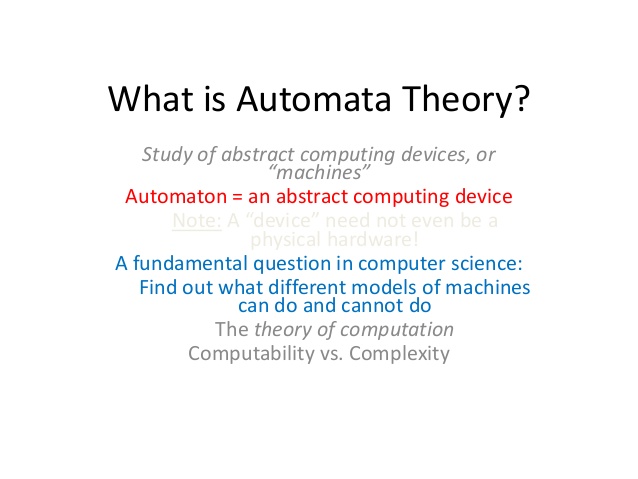


If we say there are n numbers in the list, then if the list is not sorted or indexed in any way we may have to look at every number in order to find the number we're seeking. For example, finding a particular number in a long list of numbers becomes harder as the list of numbers grows larger. In order to analyze how much time and space a given algorithm requires, computer scientists express the time or space required to solve the problem as a function of the size of the input problem. Two major aspects are considered: time complexity and space complexity, which are respectively how many steps does it take to perform a computation, and how much memory is required to perform that computation. Main article: Computational complexity theory A representation of the relation among complexity classesĬomplexity theory considers not only whether a problem can be solved at all on a computer, but also how efficiently the problem can be solved. Many mathematicians and computational theorists who study recursion theory will refer to it as computability theory. Ĭomputability theory is closely related to the branch of mathematical logic called recursion theory, which removes the restriction of studying only models of computation which are reducible to the Turing model. Much of computability theory builds on the halting problem result.Īnother important step in computability theory was Rice's theorem, which states that for all non-trivial properties of partial functions, it is undecidable whether a Turing machine computes a partial function with that property. The statement that the halting problem cannot be solved by a Turing machine is one of the most important results in computability theory, as it is an example of a concrete problem that is both easy to formulate and impossible to solve using a Turing machine. Automata are used as theoretical models for computing machines, and are used for proofs about computability.Ĭomputability theory deals primarily with the question of the extent to which a problem is solvable on a computer. An automaton can be a finite representation of a formal language that may be an infinite set. Automata comes from the Greek word (Αυτόματα) which means that something is doing something by itself.Īutomata theory is also closely related to formal language theory, as the automata are often classified by the class of formal languages they are able to recognize.

These abstract machines are called automata. Α A β → α γ β \alpha A\beta \rightarrow \alpha \gamma \betaĪutomata theory is the study of abstract machines (or more appropriately, abstract 'mathematical' machines or systems) and the computational problems that can be solved using these machines. Linear-bounded non-deterministic Turing machine Α → β \alpha \rightarrow \beta (no restrictions) Some pioneers of the theory of computation were Ramon Llull, Alonzo Church, Kurt Gödel, Alan Turing, Stephen Kleene, Rózsa Péter, John von Neumann and Claude Shannon.īranches Automata theory In the last century, it became an independent academic discipline and was separated from mathematics. Therefore, mathematics and logic are used. The theory of computation can be considered the creation of models of all kinds in the field of computer science. So in principle, any problem that can be solved (decided) by a Turing machine can be solved by a computer that has a finite amount of memory. It might seem that the potentially infinite memory capacity is an unrealizable attribute, but any decidable problem solved by a Turing machine will always require only a finite amount of memory. Computer scientists study the Turing machine because it is simple to formulate, can be analyzed and used to prove results, and because it represents what many consider the most powerful possible "reasonable" model of computation (see Church–Turing thesis). There are several models in use, but the most commonly examined is the Turing machine. In order to perform a rigorous study of computation, computer scientists work with a mathematical abstraction of computers called a model of computation. The field is divided into three major branches: automata theory and formal languages, computability theory, and computational complexity theory, which are linked by the question: "What are the fundamental capabilities and limitations of computers?". In theoretical computer science and mathematics, the theory of computation is the branch that deals with what problems can be solved on a model of computation, using an algorithm, how efficiently they can be solved or to what degree (e.g., approximate solutions versus precise ones). Turing machines are frequently used as theoretical models for computing. An artistic representation of a Turing machine. For the journal, see Theory of Computing.


 0 kommentar(er)
0 kommentar(er)
